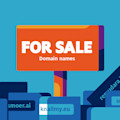Mobile internet access accounts for more and more of the time that Dutch people spend on line. Since 2014, there has been a particularly sharp rise in the use of smartphones for accessing the net. Two years ago, the average Dutch person spent twenty-nine hours a month on line with a smartphone. Now the figure is forty hours a month. The rise is linked to more intensive use of a smaller number of apps by all age groups, from the young to the over-65s. Those are the key findings of the research report Trends in Internet Use 2016, which SIDN is publishing today at the ECP annual congress.
The percentage of survey respondents who have smartphones has gone up a lot in the last two years. In 2014, 68 per cent had internet-enabled smartphones. Now 82 per cent do. Much of that is down to older consumers: amongst over-65s, smartphone possession increased from 33 per cent to 55 per cent. Over the same period, tablets' market penetration barely increased.
Google and Facebook consolidate their positions
More and more internet access is from mobile devices and involves the use of apps. However, the number of different apps that people use is declining. Facebook and Google are even more dominant in the Netherlands' top ten apps. With the acquisition of WhatsApp and the rise of Messenger, Facebook has further consolidated its position on users' screens. Maps, YouTube and Gmail ensure that Google isn't far behind. The most popular local app, Marktplaats, is down in tenth. And even the company behind that is now owned by the US giant eBay.
Businesses more positive about on-line activities
Businesses expect more on-line activity in the period ahead than they did in 2014. More of them are planning new websites and anticipate growth in their domain name portfolios. They also believe that the collective importance of on-line resources, including social media, apps and campaign sites, will increase further in the next few years.
Young people turning away from e-mail
Amongst young people, there is growing demand for domain names, particularly for professional purposes, e.g. self-employment. More than half of the younger consumers thinking of getting a domain name say that they want it for professional reasons. E-mail has fallen completely out of favour with this age group: only 6 per cent of young would-be registrants see mail as a reason for getting a domain name. By contrast, older people (including over-65s) with registration plans are more likely to want a domain for personalised e-mail than two years ago.
.nl as popular as ever
Regardless of their age, Dutch people have a strong preference for .nl domain names. And so do Dutch businesses. Out of all the available extensions, .nl is still seen as the most reliable. In fact, its reliability rating has gone up, from 76 per cent in 2014 to 82 per cent now. The .com extension comes a close second, with a 74 per cent rating, up slightly from 71 per cent in 2014.
Fourth study of trends in internet use
Over the last few months, SIDN has been working with research agency GfK to survey trends in internet use for the fourth time. The study involved more than four thousand consumers and eight hundred businesses. In addition, 68 million items of data from internet users in the GfK Crossmedia Link / DAM panel were analysed. The survey is one of broadest comparable studies undertaken in the Netherlands.



